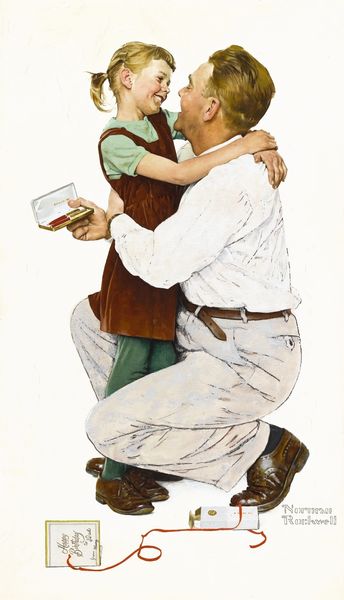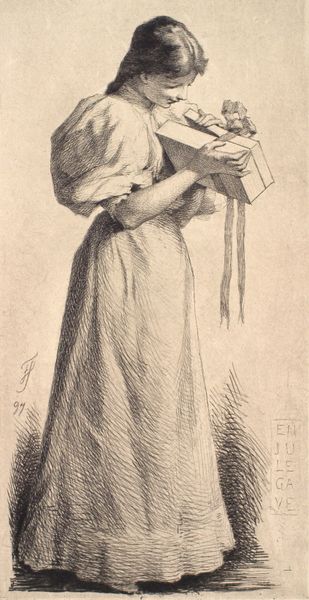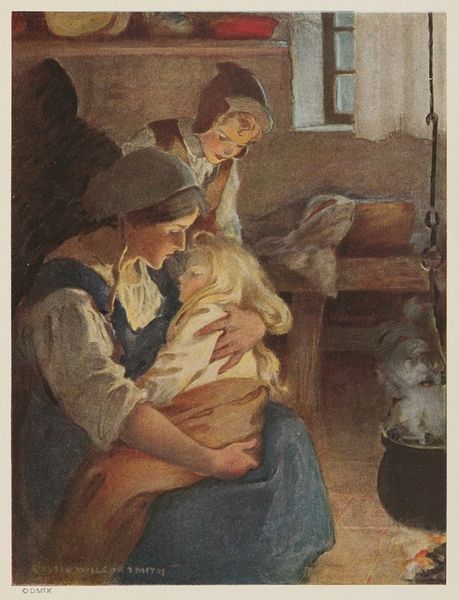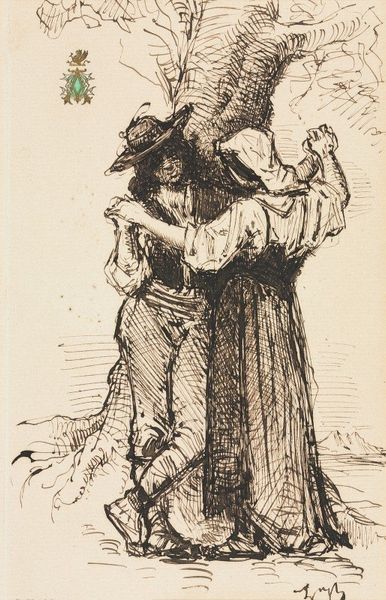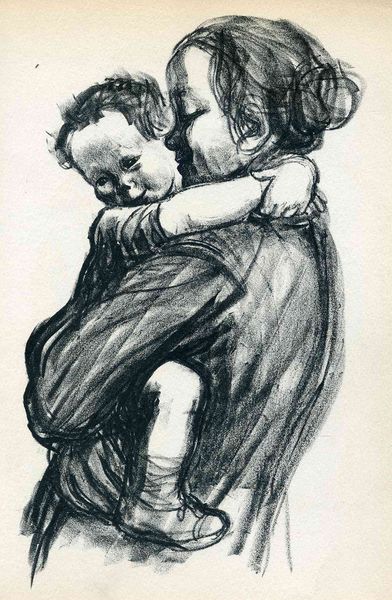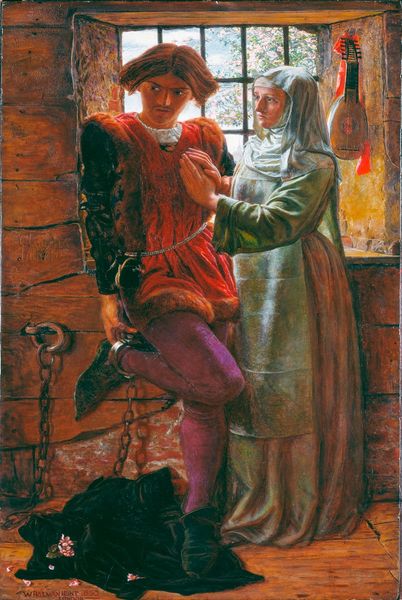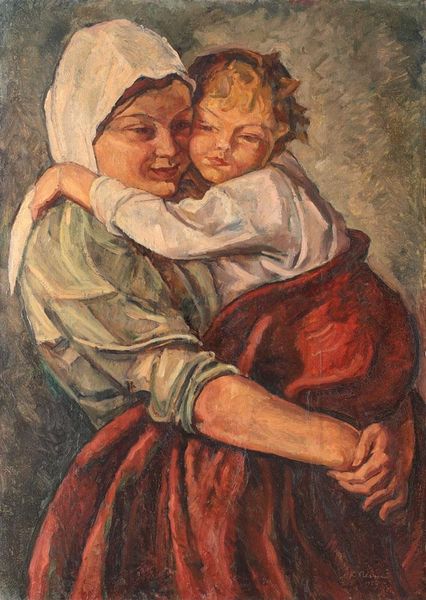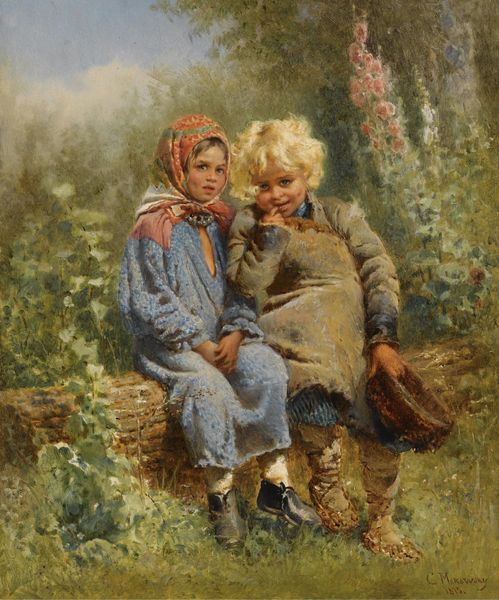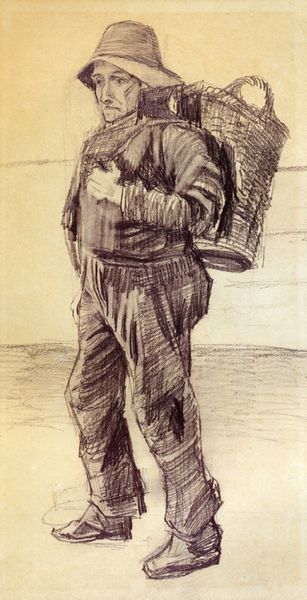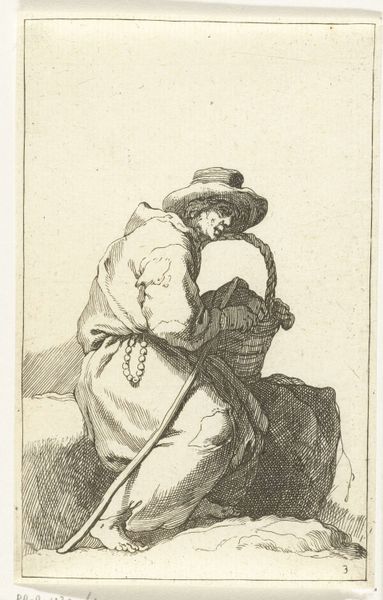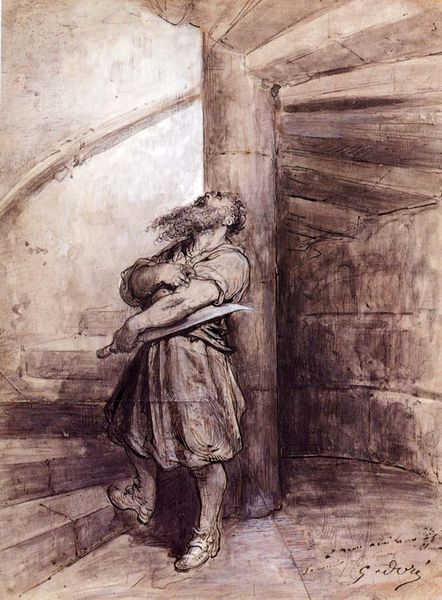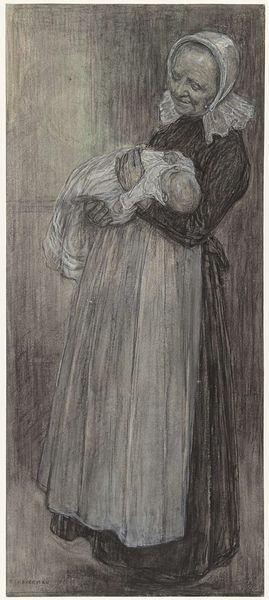
Dimensions: 30 x 20 cm
Copyright: Public domain
Curator: Welcome. Here we see "Two Women," completed by Ilya Repin in 1878. Repin, of course, is a pivotal figure in Russian Realism. This piece employs watercolor and hints of oil to render a touching, intimate moment. Editor: There's an immediate melancholy to it, wouldn't you agree? The figures are embracing, but it reads as sorrowful. Note how Repin uses line to separate their forms from the otherwise airy backdrop—a literal form of isolation. Curator: I find your reading astute. But consider also the materiality: The visible brushstrokes and almost sketch-like quality remind us of the hand of the artist, the labor involved in its creation. The watercolor allows for subtle gradations of color, particularly in the women’s clothing. Are these everyday clothes, I wonder? What do the fabrics signify about their status? Editor: They appear to be wearing traditional peasant clothing. Their garments, in fact, emphasize their social and economic standing, wouldn't you argue? See how the textures of fabric and even their bare feet against the ground, hint at lives lived closely connected to the land. Curator: Exactly! Furthermore, the plaid skirt versus the solid, dark fabric create a visual duality—perhaps reflective of contrasting roles or emotions. Also, note the compositional balance. While both figures lean into one another, Repin subtly guides the eye across the image by leading the color elements with the red cap to red stripe detail around the one's skirt's hem, keeping your attention actively engaged with both. Editor: The way Repin portrays these women, you feel a sense of their resilience despite hardship. Look at their raw skin tone; The stark simplicity emphasizes a sense of collective identity as working-class women within 19th century Russia, struggling in plain sight. Curator: In terms of its style, there is a natural simplicity. Its impact originates not only from representational faithfulness but also through formal choices. These elements work harmoniously together—that is truly key. Editor: I find myself respecting how such quiet artistry still makes space to display human hands impacting lives in shared vulnerability, across ages. It prompts us toward reflections on social justice—all using raw and deliberately deployed marks in simple harmony.
Comments
No comments
Be the first to comment and join the conversation on the ultimate creative platform.
